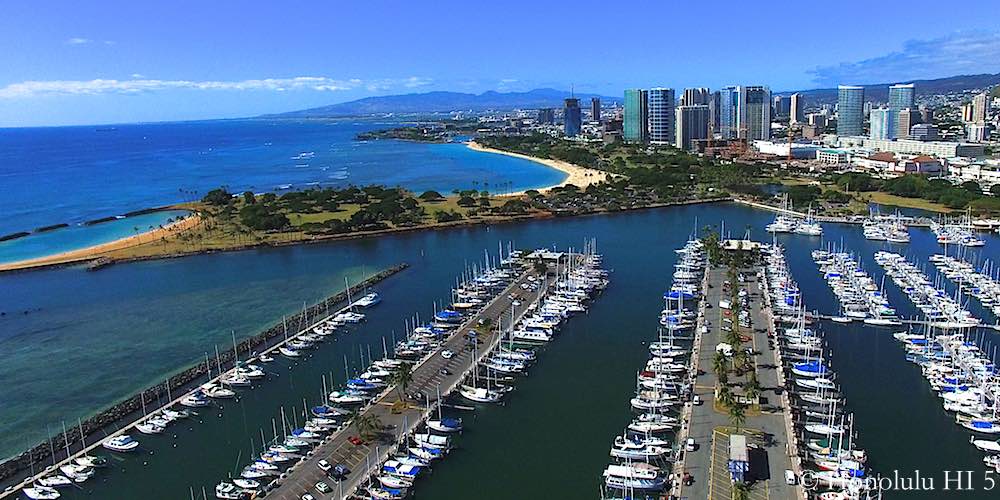Honolulu today is a city of condominiums and it will remain that way probably forever. It’s a place where real estate is a premium, almost a luxury, so high is the demand, so that form of housing is the best solution. The question is how did we get here? And where are the current trends leading?
The answers lie in a very short period of time, just under 7 decades, though you’ll see that most of the transformation of this once quiet town into a modern urban skyline was accomplished in just 2. Where New York had skyscrapers in the early 1900s, our city had none until the 1960’s. It’s a history that makes sense of today.
Follow along and you’ll understand exactly why Honolulu real estate is facing the immense challenges that affect every one who calls it home, or would like to someday. You’ll also see why the future has much to be excited about as well.
1950 – 1959
Number of Condos Sold in Last 5 Years That Were Built in 1950s: 623.
The 1950’s are the key moment when Hawaii, and especially Honolulu, swelled in size, turning from an isolated, if well known, small and sleepy city to a place under siege from an unending stream of new residents. In addition to its easier access to Mainlanders through better and more available travel options, that also created jobs and business opportunities in a booming tourist trade.
Often forgotten is the fact that locals from the Neighbor Islands were coming over as well. Mechanizing and other factors had downsized some of the plantations’ labor needs there. With few other employments possible on their Island, Honolulu’s growing economy was very attractive.
These factors sent Honolulu real estate upward as never before, bringing high-rise condos to the landscape for the first time.
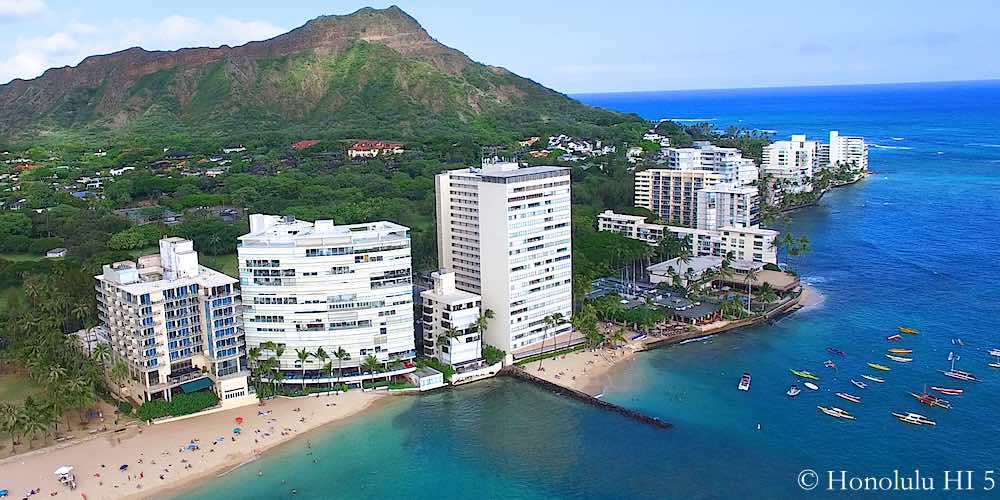
Like today, a prominent part of this new build-up was aimed at the higher levels of the market. It is during these years that several of the Gold Coast condominiums went up, providentially at a time that allowed them to be located so near the ocean.
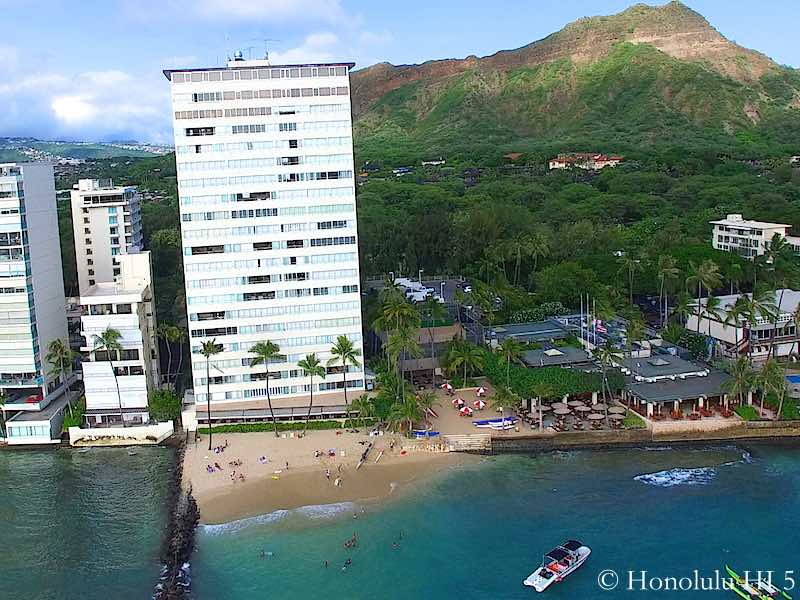
The Tahitienne, Tropic Seas and the Diamond Head Ambassador are just a few examples, along with the Colony Surf that stands guard over, and on, Kaimana Beach.
Other areas of Diamond Head grew upward at this time as well, such as much of the Pualei Circle buildings that sit just across the street from Kapiolani Park. These residences, such as the Diamond Head Surf and Hale Pua Lei, were smaller both in height and width, a more affordable option in this neighborhood.
Waikiki next door was experiencing its first elevation, with a mix of low-rises, such as the still charming walk ups on the Ala Moana end that are clustered together, with names like the Marina Gardens and the Hawaiiana Gardens. Higher structures were going up as well in the resort district like the Kalia & Rosalei.
None could be said to be higher end or luxury condos, clearly meant for for the local working or middle class. This trend would not continue as the neighborhood side of Waikiki began to shrink more and more with the spectacular growth of tourism and its demands.
The areas closer to Downtown were also prime sites of condo development, to house the many who then, as now, were employed there. Makiki, Punchbowl and Kalihi-Palama got the attention of developers. The Kalihi Gardens and Kokea Gardens in Kapalama both date from this time, while Makiki saw even more additions, like 1510 Liholiho and Punahou Terrace on Makiki Street.
A couple of things that should be acknowledged is that despite the unprecedented changes, the single family home was still the primary residence for residents here at the end of the 1950’s. The housing need was an issue, no doubt, but had not reached the levels it would in the succeeding years.
Another notable fact is that none of the residential buildings that went up in this era were taller than the Aloha Tower. High-rise condos were here, but in still small numbers. They hadn’t scaled the heights they would shortly.
1960 – 1969
Number of Condos Sold in Last 5 Years That Were Built in 1960s: 3,489.
The 1960s began deceptively quiet, one writer in a 1963 issue of Paradise of the Pacific (now Honolulu Magazine) commenting that the building boom seemed to have ended in Honolulu. How wrong he was.
Despite that pronouncement, condos in Honolulu were going up from the very start of the decade. The Gold Coast saw more of its shoreline filled in, including the Castle Surf, Coral Strand and Sans Souci in the first 2 years alone.
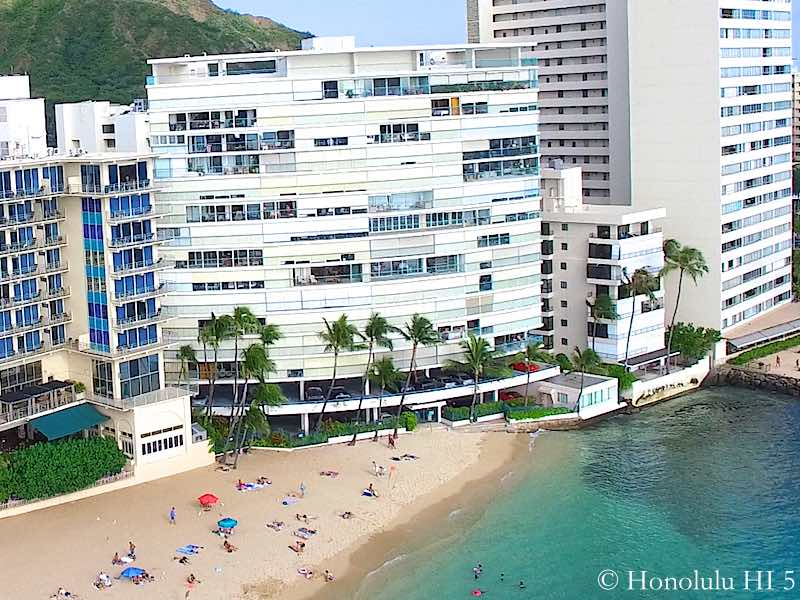
Pualei Circle began to complete its empty puzzle pieces, following a thematic trend in new buildings named Diamond Head Gardens, Diamond Head Terrace, Diamond Head Plaza and the straightforward Diamond Head at Pualei Circle, all completed before the end of 1965.
This was also the key moment when the bohemian section above Kuhio Ave, infamously called The Jungle, began to see its aging homes give way to the man-made forest we know today. The preceding decade’s residential development in this district had primarily been around the edges of the central part of Waikiki and in just a few spots where it did penetrate. After 1967, the wall was fully breached and no going back.
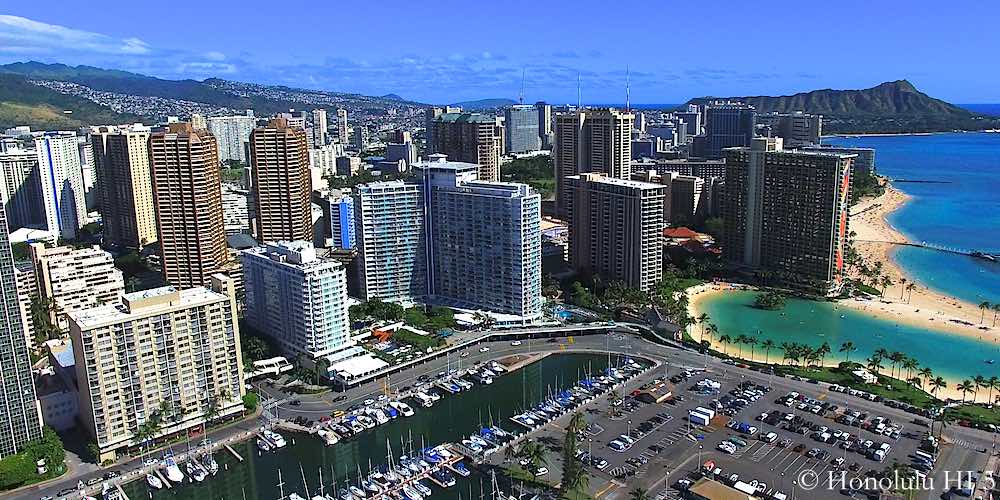
The Fairway Manor, Governor Cleghorn, Marina Towers are just a few that went up at this time in that area. Elsewhere, other big changes were happening, like the Waikiki Shore on Kalia Rd, the only Waikiki condo today that’s right on the beach.
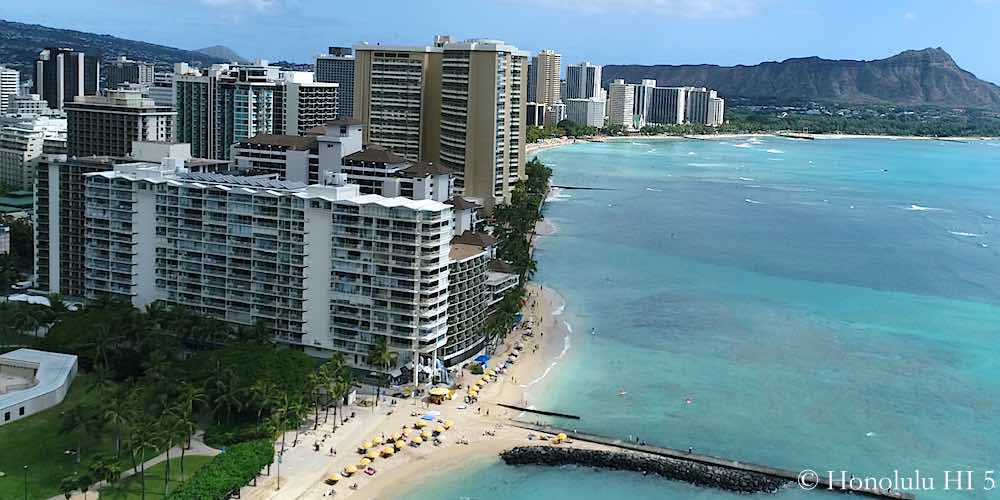
Two other areas of Honolulu took shape in this era as well. Hawaii Kai had sprung up from barren land out east with its special low-rise townhome condos that proved extremely popular. Koko Isle, Moorings, Colony Marina and the Marina Palms took their places on the waterfront carved by Henry Kaiser.
Back in town, another piece of land had become home to Ala Moana Center in 1959, setting in motion development all around it. 1350 Ala Moana emerged next door to the mall, forerunners of the Kakaako forming right now.
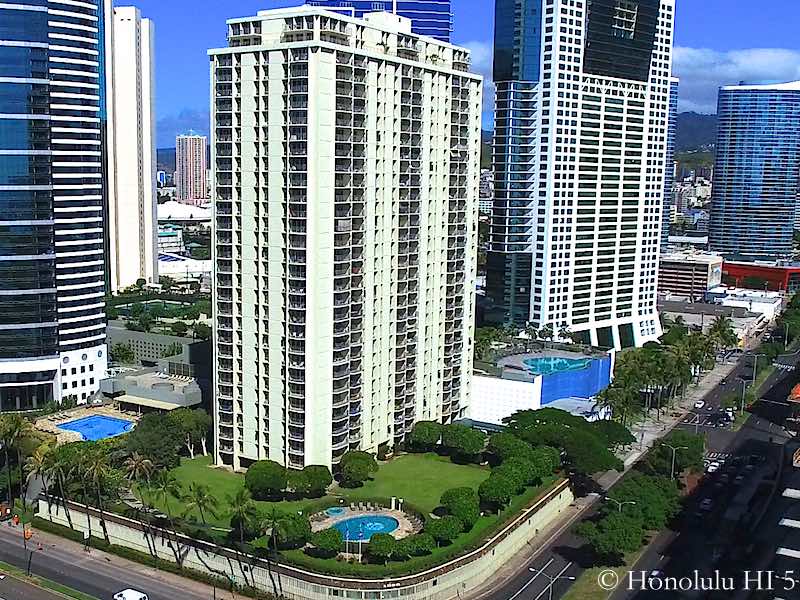
Kaheka saw an especially large build up, condos being erected all around today’s Don Quijote. This was mirrored in the once quiet and removed Punchbowl-Makiki neighborhoods, the face of their avenues changed forever.
The towers went all the way to the very sides of Punchbowl, the Royal Vista standing against it before the decade closed. Wilder Avenue was the site of many new buildings as well, like 1001 Wilder and 999 Wilder.
No part of Metro Honolulu was untouched in these years. It’s no accident that the joke about the construction crane being the Hawaii State Bird was first heard in the latter part of the 1960s. This decade would end far differently than that writer in 1963 predicted – and there was no end in sight.
1970 – 1979
Number of Condos Sold in Last 5 Years That Were Built in 1970s: 6,947.
1970, and the following 9 years after it, were a continuation of the condo development that had recently picked up steam. Only now it truly hit full speed. This was the time when condos replaced single family homes in Honolulu, as the main form of residence.
Waikiki was unrecognizable by the end of this time, the once plentiful houses between the Ala Wai and Kuhio Avenue disappeared almost completely. Now high-rises occupied almost every lot, reflecting the hotel towers that were now dominating the makai side of Kuhio to satisfy a visitor demand that couldn’t seem to be satisfied.
The view from across the Ala Wai was now a Great Wall of multi-story condominiums, almost unbroken from Kapahulu Avenue to the cul-de-sac that ends against Ala Moana Blvd crossing the canal.
Not only was The Jungle gone, the same process was happening on the west side, where Discovery Bay, the Wailana and the Waipuna were erected, along with many more. In the 10 years from 1965 to 1975, Waikiki went through a transformation that was unparalleled, matched only by today’s Kakaako and possibly one other contemporary neighborhood.
That contemporary was Hawaii Kai, of course, but it was being created out of whole cloth, lacking the destructive phase Waikikians, and other locals, went through, watching something so intertwined in their lives wiped away.
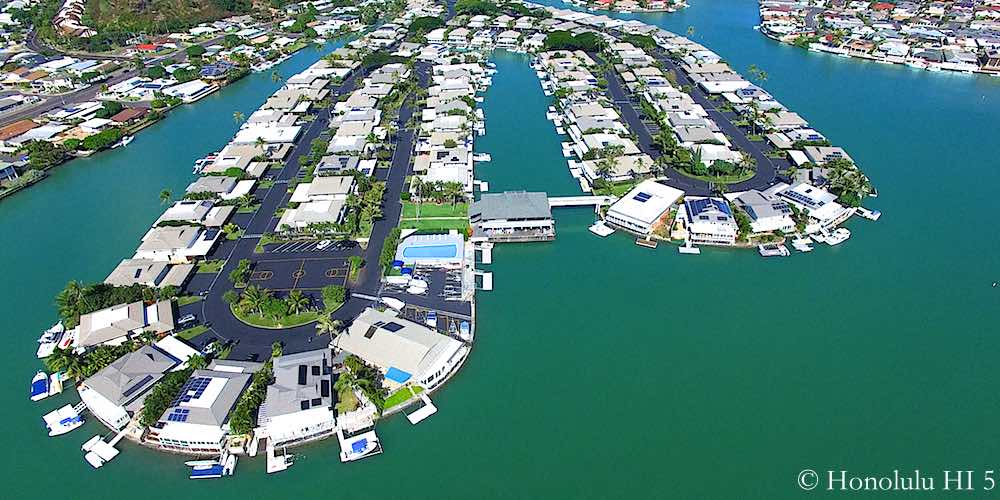
The still forming district was now filling in more fully. Kuapa Isle, Kaimala Marina and the Gateway Peninsula all had their first residents before the mid-point of the decade had been reached.
Those 1 or 2 story townhome style units were joined for the first time by the towering structures of the Mauna Luan and Naniwa Gardens, which bucked the initial Hawaii Kai trend, but still somehow fit right in.
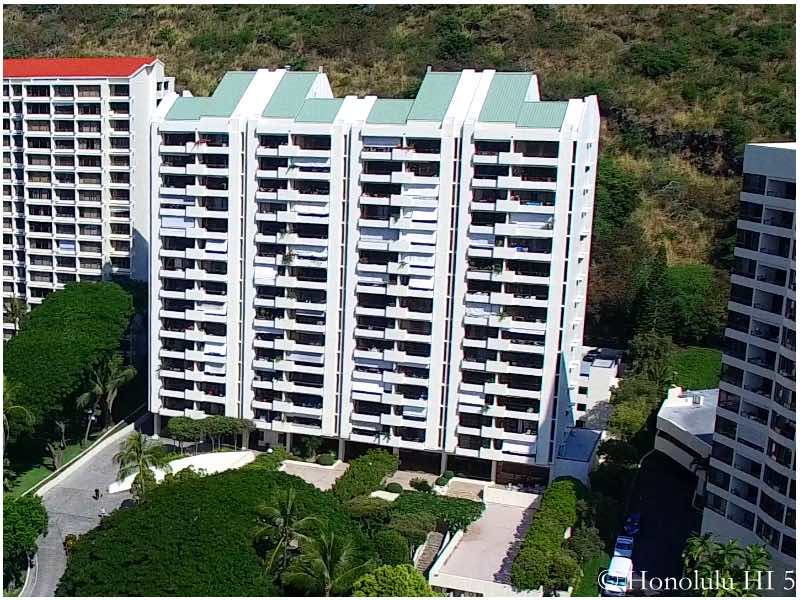
The other extremity of Honolulu, the Salt Lake area, was undergoing its own urbanization now. The line of high-rises along that strip rose up. Built to feed the housing demand from not only locals, but the growing military presence during the Vietnam War, developers created a small residential cityscape that has proved popular for its location near the bases and the highway.
Every part of Honolulu saw some form of condominium living newly added to them in these 10 years, with Makiki, Kalihi especially getting attention and even Nuuanu having newly constructed properties.
THE MOST IMPORTANT DECADES IN HONOLULU’S DEVELOPMENTThis will put the scale of the change that occurred in perspective. The span between 1960 to 1980 accounts for almost ½ of Honolulu’s the condo inventory we have today That percentage will decrease with Kakaako’s emergence, but those 20 years will still be the lion’s share of the pie for some time.
Yet it was the latter decade that was the dominant partner in that alteration. For much of the 1970s, developers added 12,000 new homes in Hawaii every year. Most of that on Oahu, contained in condominiums. That pace is still a record today, no other decade coming even close.
1980-1989
Number of Condos Sold in Last 5 Years That Were Built in 1980s: 866.
The 1980s saw a slowdown finally, the result of a few different factors. Being an Island there are only so many places to build, for one.
Another is that, even with a housing crisis, resistance had been building for some time as locals felt more and more of their way of life slipping away under all of the development. It was during this time that areas like the North Shore and Kailua began to organize efforts to keep the build-up from reaching their borders.
In one case, Kaiser Development was given the go ahead by the City Council to build condos at Sandy Beach. The outcry was immediate and, after a long grassroots battle that put the project on a public ballot vote, locals voted No in a landslide. Things were different now.
A distinct ramping down did take place in Honolulu, but not a complete halt by any means. Waikiki remained at the forefront as before, the standout property being the unmistakable Liliuokalani Gardens. Still, after the 1970’s, this was primarily a spotty effort, building on the few lots that became available or were still empty, which weren’t many.
So, though you had condominiums in Waikiki newly added in the old Jungle section, the Hobron section to the west and elsewhere, it was more of a filling in now. Completing a job that was almost done.
Salt Lake grew sharply now, expanding to the mauka areas of Salt Lake Blvd to the long stretches of Likini and Ala Ilima Streets. Names like Franklin Towers, Horizon View Tower and Plaza Landmark all sold their first units in the 80’s.
Despite the general reduction in the number of construction cranes, one area of town saw a definite rise in new condos. The Makiki-Punchbowl district tallied up a number of condos to their collection. The Punahou Palms, Piikoi Atrium and 1015 Wilder come back to this time, among others. The location near Downtown, but out of the main traffic areas proved popular to condo buyers, the high rises even providing ocean views in some cases.
Meanwhile, over 20 years later, new Hawaii Kai waterfront townhomes were still being added in the form of Mawaena Kai, a testament to just how big the marina is there. They also unveiled the 16 floor Commodore as well, increasing the inventory, but parking it out of the way on the side of the valley.
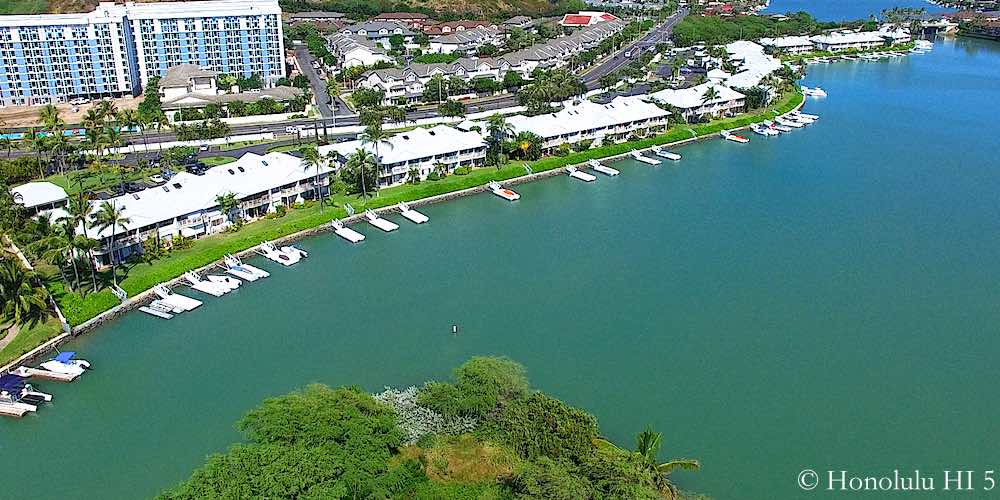
The decade closed with some very significant individual alterations to the town, but nothing on the sweeping scale of the last 2 timespans. This was the time of feverish buying and investment in real estate by Japanese investors. So much so that the economies of Japan and Hawaii became strongly linked.
The 1980’s ultimately showed that it just wasn’t possible to do as large a scale of residential development in Honolulu as before. Land opportunities had run out. It was also more difficult to jump the legal and regulatory hurdles when officials felt under pressure to slow things down. Even bigger problems, though, were just ahead.
1990 – 1999
Number of Condos Sold in Last 5 Years That Were Built in 1990s: 477.
In December of 1989 the Nikkei 225 stock index, similar to the Dow Jones in the US, hit its peak. It’s the delirious top of a bubble that bursts in the following year, bringing down Japan’s economy with it.
This devastatingly reverberated through Hawaii, taking us down to 51st in the nation’s economies according to a 1992 US News & World Report study, beneath every other state and the District of Columbia. With a crippled economy, new construction came to an abrupt stop.
Where development did happen on Oahu, it was now on the West Side, where huge tracts of land were now available with the plantations dying out. Few were against building homes there and the government was even actively promoting it.
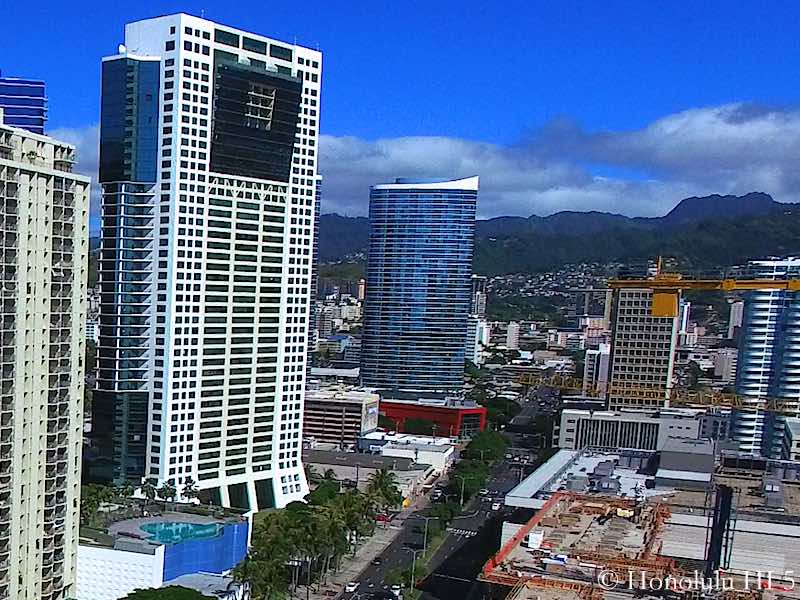
Back in Honolulu, not everything was quiet. In Kakaako, condo development was fairly busy, including the Hawaiki Tower and Nauru Tower. The two are virtual blueprints for the new Kakaako taking shape today, with their very modern, very luxurious features and widescreen ocean views.
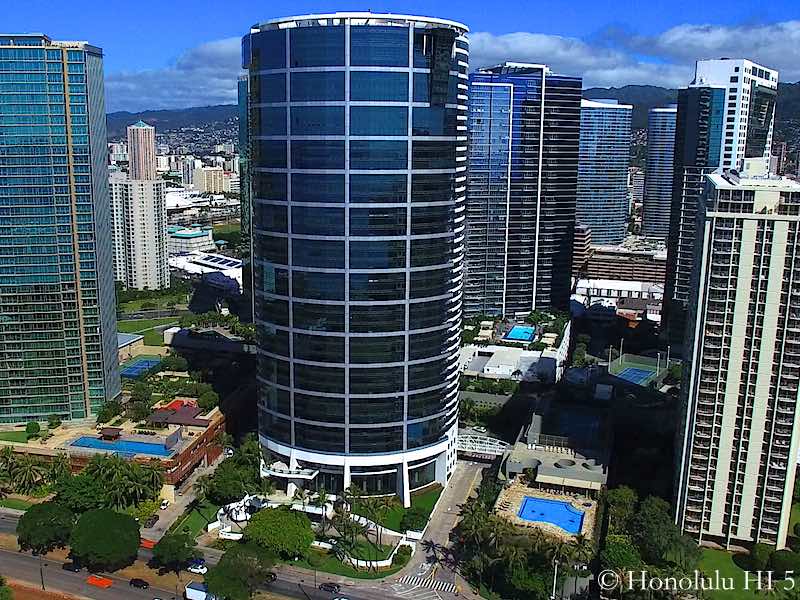
Other projects, secure in their financing, went on, the best example being the Hawaii Kai project. The Kalele Kai and Lalea at Hawaii Kai communities opened on schedule in these harder times.
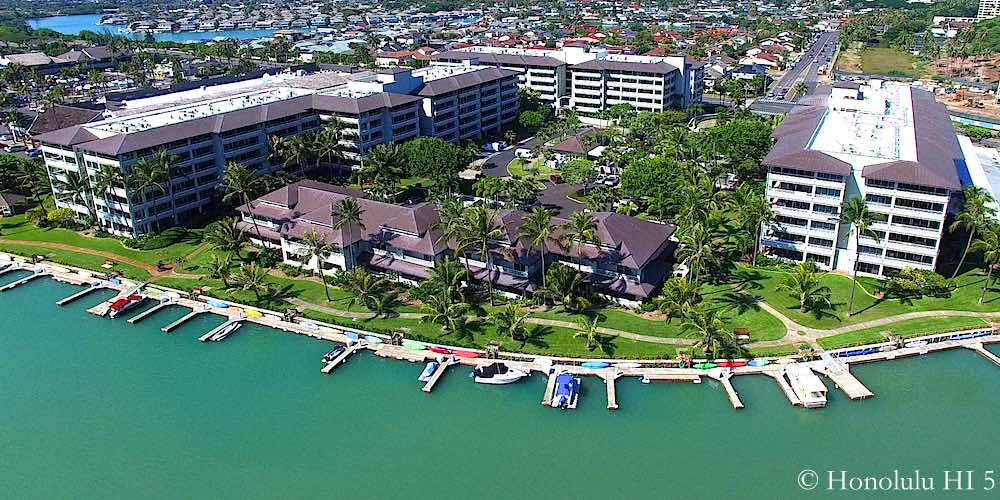
Where the consequences of the Japan bubble were most visible was in Waikiki. During the boom years this was an obvious place for investors to put their money. With the money pouring in, a group of Japanese backers built the Waikiki Landmark, only to have to abandon it on the edge of completion when the crash wiped them out. It was a looming reminder of the over exuberance of the times as it sat empty for some time.
This was not a good decade to be putting up a condominium in Honolulu. Those who could ride it out were rewarded in the coming rebound, but many couldn’t make it there. The fall was just too long and too hard. By 1999, fortunately, things were starting to turn around and solid ground was finally in sight.
2000 – 2009
Number of Condos Sold in Last 5 Years That Were Built in 2000 to 2009: 861.
Things did come back with the change of the Millennium and it brought a distinct shift to the Honolulu condo market. With the more affordable market being fed by Ewa Beach, Honolulu saw a greater focus on the higher, even luxury, level.
This was very apparent in the once dormant Waikiki neighborhood. The 1st decade of the 2000s saw the proud announcement of coming residences that had amenities, features and services that never had come before with your mortgage here.
The Allure, The Watermark and Trump Tower all offered degrees of front desk services, sculpted interiors and exteriors and often stunning views. Buyers at these levels now expected more for their money and were prepared to pay for it. The builders were happy to oblige.
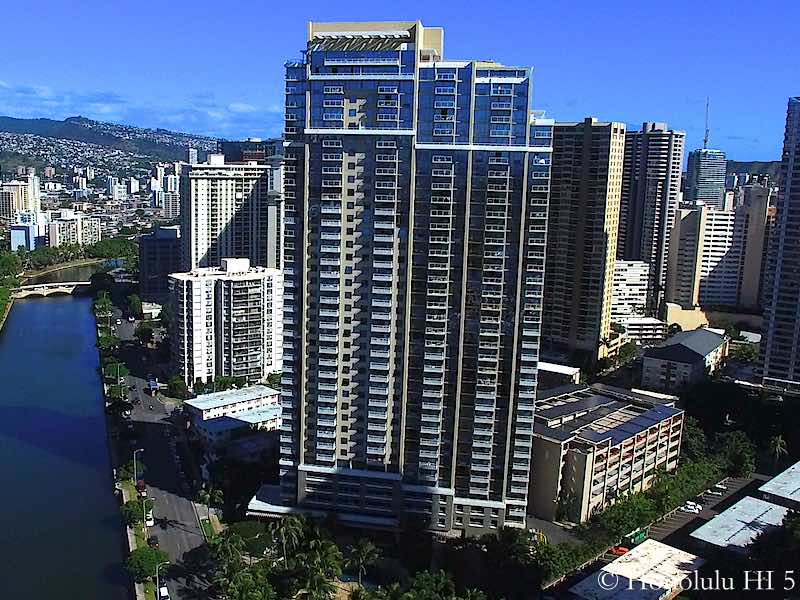
Kakaako, which already had a couple of these types of properties, now went all in. The greater spaces available there allowed these condominiums to have tennis courts, large pools and expansive recreation decks. Although they pre-dated the current Kakaako project, it’s clear they were intended to inhabit the same environment and criteria in many ways. Anyone familiar with the Hokua or Koolani will agree.
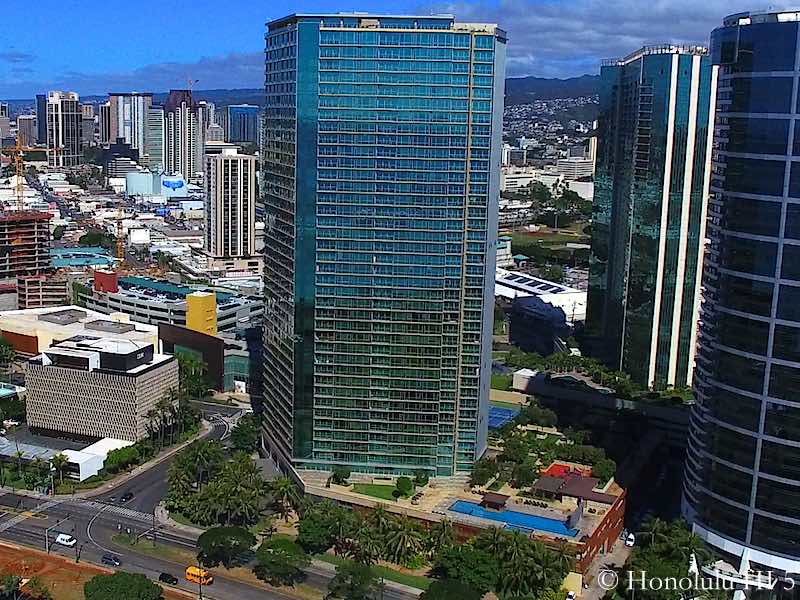
Where Kakaako was just getting started, Hawaii Kai was drawing to a close. At least 5 more communities threw open their doors before the end of 2009, but that was just about it. The project was finally completed and, like their predecessors elsewhere in Honolulu, the residents are not receptive to anything further.
2010 – 2017 & Beyond
In our present time, it’s obvious that one neighborhood is center stage for real estate in Honolulu. Kakaako’s planned community will hold onto that status for some time to come as it will take years to complete it, but there’s much to see and a lot known already.
The developers, Howard Hughes and the Bishop Estate, have made it clear that they are constructing an extremely modern, yet culturally and environmentally Hawaiian district. Urban, pedestrian friendly, filled with green spaces, parks and community spaces. It will also have properties that reach the heights of luxury living and maybe even surpass it.
Waiea has already opened, with its fishnet-in-flight patterned glass wall standing out on the exterior. Inside residents have catered dining rooms, concierge services, fine décor and views on the Pacific that no artwork can rival. Anaha is close to completion just across the street, it’s jenga-like structure confirming that Kakaako will be a collection of exquisite architecture to revel in for residents.
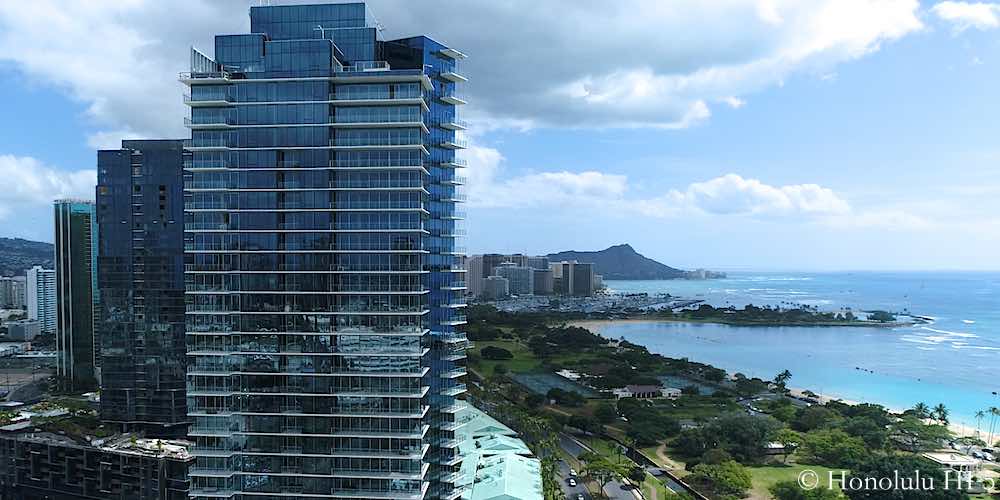
Plans and simulations for others are creating the excitement for this place that is truly something different and unique. Not just in Hawaii, but anywhere.
This revitalization has extended to its neighboring areas, with new high-rise construction going on at the same time. Kapiolani Blvd has recently seen Symphony come up and now you can even live in Ala Moana Shopping Center in One Ala Moana or Park Lane. The lifestyle possibilities in a Honolulu condo have exploded and there’s more to come.
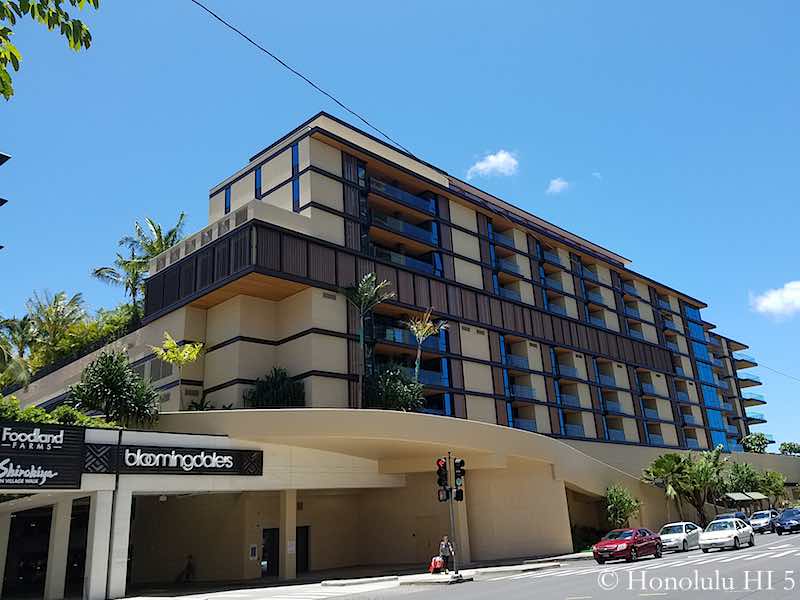
This same elevation has found room in Waikiki, with the Ritz-Carlton Residences now valet parking the cars of its residents on their way to their very nice homes. Planning is underway for a new condo-hotel building on the site of King’s Village, with another to rise up where Kyo-Ya Restaurant sits shuttered right now. Both aimed at the higher end of the market, of course.
WHERE CONDOS IN HONOLULU ARE HEADED
It is true that Kakaako will have affordable homes as well as mid-level market condos in the mix, but the die is cast, it seems, for the city’s future construction. More and more upscale properties will dominate Honolulu’s condo development, not only due to the fact that they are practically guaranteed to sell, but also the cost of land and construction here almost requires that price point to make a healthy profit.
Not every property will be towers of $1M+ units. It is clear, however, that the days of plain high-rises with few, if any, amenities that typified much of the 20th Century building boom are gone in Honolulu. They will still exist, but the scale has tipped to a higher-grade of home and that’s the way it will remain.
